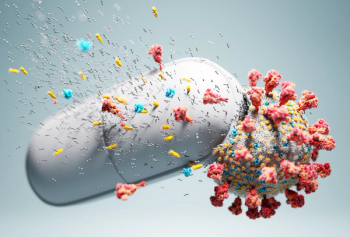
New drugs offer hope to diabetes patients
The race is on. For both Type 1 and Type 2 diabetes, manufacturers are vying for pole positions with new therapeutic strategies that promise better disease management, improved quality of life, and ultimately prevention of diabetes complications.
The race is on. For both Type 1 and Type 2 diabetes, manufacturers are vying for pole positions with new therapeutic strategies that promise better disease management, improved quality of life, and ultimately prevention of diabetes complications.
In Type 1 diabetes, a major thrust is toward the development of an artificial pancreas to better control the disease, preventing or minimizing disease complications. Technologies that could comprise the first steps toward this goal are already in place, including DexCom Inc.'s STS Continuous Glucose Monitoring System (approved in 2005) and Medtronic Inc.'s (recently approved) Guardian REAL-Time System as well as the MiniMed Paradigm REAL-Time System that combines a continuous insulin sensor with an insulin pump.
Trials of Abbott's FreeStyle Navigator Continuous Glucose Monitoring System are also encouraging. Simultaneously, in clinical trials, drugs are attempting to halt the autoimmune attack that destroys the beta cells, a major pathology of Type 1 diabetes.
At this time, however, the fly in the ointment is that systems are not reimbursed by insurers and can result in an out-of-pocket expense greater than $300 per month. JDRF intends to address this problem in the near future with a study documenting cost-effectiveness to aid in obtaining reimbursement.
Using the system allows individuals to see the effects on blood glucose levels of food, exercise, and trends over time, allowing modification for better diabetes control. Although currently approved only for individuals age 18 and older, some trials of the MiniMed Paradigm REAL-Time System are being conducted in adolescents. "The kids who have been wearing it have really seen a lot of benefit," reported Buckingham. "What they are worried about is that when they get to the end of the study [because it's a research device], they have to give it back. And they're saying 'No, you can't have it back.'" They are generally looking at their blood sugar 20 times a day, he said.
But as Kowalski pointed out, these technological advances are moving toward a vision of JDRF-a closed-loop system-an artificial pancreas that is also in early testing. "What you'll find is that even with these sensors, it's still tough," he said. "It's a tremendous step forward, but it's not the magic bullet. If you have somebody-a six-year-old or a 75-year-old-who doesn't understand his or her diabetes well, you need automated control."
Kowalski believes that a device that senses the blood glucose, calculates and adjusts the insulin dose, and then injects it is currently the most promising means of preventing diabetes complications. "That'll be the tremendous step forward for people with diabetes." But, he continued, "it's not the end goal for JDRF. The end goal is to walk away from diabetes completely through a biological cure."
Newsletter
Pharmacy practice is always changing. Stay ahead of the curve with the Drug Topics newsletter and get the latest drug information, industry trends, and patient care tips.













































































































































